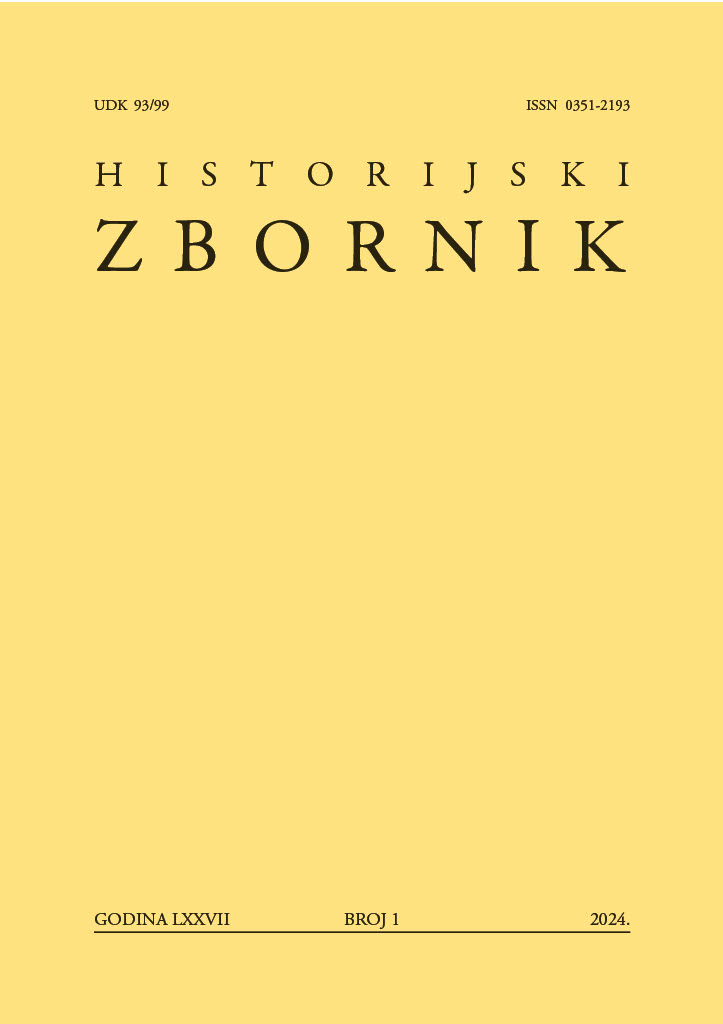The border between the German Reich and the Independent State of Croatia (1941-1945): the case of the Sotla River
DOI:
https://doi.org/10.59412/hz.77.1.3Keywords:
World War Two; Independent State of Croatia; occupied Slovenia/German Reich; border-related studies; Sutla/Sotla RiverAbstract
The present-day border between Slovenia and Croatia was the south-easternmost border of the German Reich during the Second World War. The border between Germany and the newly-established Independent State of Croatia was roughly defined by an intergovernmental agreement in May 1941, and a German-Croatian demarcation commission was set up to determine the border on the ground. The Germans secured the border with wire fences and minefields. At the most exposed points, a two-metre-high wicker fence was erected, topped with barbed wire. Behind this, two to three metres of barbed wire were laid across the ground. In addition, a number of watchtowers and bunkers were built, and trenches dug, the remains of which can still be seen today. Border posts were also set up in places where special surveillance was required. Fortification of the border began in October 1942 and continued from the second half of 1944. The defence line was mainly built by mobilised local residents and forced labourers. The border itself was marked by numerous boundary stones, over two thousand in all. Today they are well preserved on the Macelj ridge, where they can be found at every 50 metres; and are the only demarcation between Slovenia and Croatia in this area. The border could only be crossed at guarded checkpoints, which posed a major problem for the local population, many of whom had dual nationality. In the upper Obsotelje region, the border crossings were quite "frequent", 4 of them on the Sotla between Dobovec near Rogatec and Podčetrtek, but today there are only 4 left. The border guards on the German side were mainly elderly soldiers, mostly from Austria, who manned the border in pairs. In Obsotelje, the border mainly prevented access to the Sotla River and thus to drinking water (for people and cattle), water for washing, fishing and, during the summer droughts, water for irrigation. The permission to cross the border was not a matter of course, and that is shown by the fact that attending funerals and masses, visiting churches, relatives and friends on the other side of the border were not sufficient grounds for obtaining the permission. Despite the secure nature of the border, smuggling was rampant due to the severe shortage of goods. The minefield was usually crossed with planks and ladders, the wire fence was cut with hedge trimmers, and border guards were bribed. The mines posed the greatest threat to the local population and continued to cause many deaths long after the end of the war.
Published
Versions
- 2024-07-28 (2)
- 2024-07-28 (1)
How to Cite
Issue
Section
License

This work is licensed under a Creative Commons Attribution-NonCommercial 4.0 International License.
Copyright holders are the publisher Association for Croatian History and the authors.
Historical Journal is an Open Access journal. Users are allowed to read, download, copy, redistribute, print, search and link to material, and alter, transform, or build upon the material, or use them for any other lawful purpose as long as they attribute the source in an appropriate manner according to the Creative Commons licence CC BY-NC.
The papers published in Historical Journal can be deposited and self archived in the institutional and thematic repositories providing the link to the journal's web pages and HRČAK. Journal does not charge article processing charges (APC). The editors assume no responsibility for statements of fact or opinion made by contributors.

